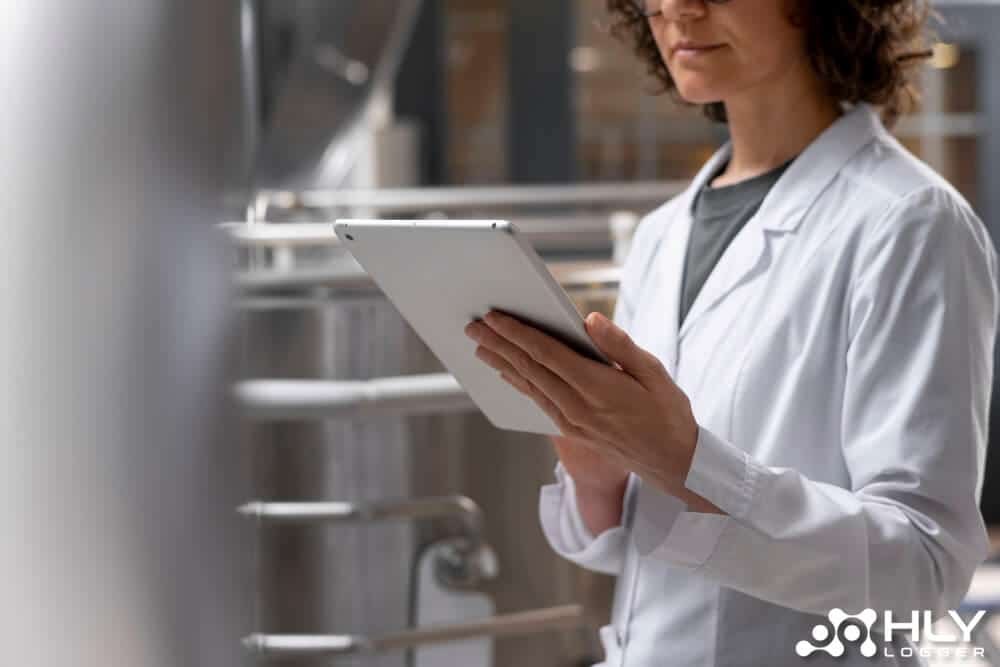IoT-based devices that operate in real time, known as real-time IoT-enabled devices, play a vital role in various sectors, including the pharmaceutical industry. The Internet of Things (IoT) refers to a network of interconnected devices that collect and share data.
In the pharmaceutical industry, IoT devices with real-time monitoring capabilities are used to oversee the storage, distribution, and production of pharmaceutical products to meet stringent quality standards. This article discusses real-time IoT device technology, how it works, and its primary benefits and applications in the pharmaceutical sector.
Contents
How Real-time IoT Devices Work in the Pharmaceutical Industry
Real-time IoT-enabled devices rely on various components and systems that allow constant data collection, transmission, and analysis:
- Data Collection with Sensors
IoT devices incorporate sensors to measure temperature, humidity, and pressure. These sensors are crucial in ensuring the stability of drugs or other pharmaceutical products. They monitor environmental conditions and record data continuously. - Data Transmission
The IoT device sends the information to a storage system—such as a cloud platform or local server—via network connectivity (Wi-Fi, GSM, 4G/5G, or NB-IoT). Centralizing these data in one platform allows easy access from multiple locations. - Real-time Processing and Analysis
Once collected, the data are analyzed using specialized software or algorithms to confirm that conditions remain within predefined standards. With real-time analysis, IoT devices can immediately send notifications or alarms if any anomalies occur, such as temperature or humidity exceeding safe limits. - Automatic Decision-making
The processed data can enable automatic decision-making. If an environmental change poses a risk to product quality, the IoT device can trigger a cooling system or alert the relevant team for rapid intervention.
Real-time IoT-Enabled Devices Technology in Pharmacy
Several key technologies support these real-time IoT devices in the pharmaceutical arena:
- Temperature & Humidity Sensors
Critical for ensuring product stability and efficacy. They operate continuously, integrated with the IoT device to provide up-to-the-minute readings. - RFID & Barcodes
Used to track the movement of pharmaceutical products in warehouses or during distribution. Integrating RFID or barcode data with IoT devices makes it easier to monitor product location and status. - Network Connectivity
GSM, 4G, 5G, and NB-IoT enable real-time data transmission from devices to the cloud, facilitating immediate access and processing regardless of location. - Cloud Platforms
Allow large-scale data storage, long-term documentation, and ongoing monitoring. Data analysis can detect patterns or anomalies and help generate recommendations for better product management.
Applications in the Pharmaceutical Industry
- Production Monitoring
Real-time IoT technology can monitor production areas and equipment, measuring factors like temperature, humidity, and air pressure in laboratories and production rooms.- Example: The M502-TH USB Reusable Logger is used to track temperature and humidity in pharmaceutical transportation, ensuring product quality throughout the process.
- Warehouse Storage Management
Pharmaceutical products often require specific conditions—such as low temperatures—to maintain quality. IoT devices enable continuous monitoring, alerting stakeholders if any deviation threatens product stability. - Distribution & Cold Chain Logistics
Maintaining a cold chain during transportation is critical for many drugs and vaccines. IoT sensors measure and transmit temperature and humidity data in real time inside containers.- Example: The M104 IoT Data Logger monitors temperature and humidity via GSM/NB-IoT technology, suitable for pharmaceutical cold chain requirements.
Ensuring Quality with HLY Technology
HLY Technology offers devices designed for cold chain logistics, ensuring appropriate temperature and humidity levels during storage and distribution. Their NB-IoT Wireless Temperature and Humidity Data Loggers and GSM/CDMA/UMTS-based devices support real-time tracking. These solutions help maintain product integrity and meet industry regulations throughout the supply chain.
In summary, real-time IoT-enabled devices are revolutionizing the pharmaceutical industry by delivering efficient, accurate monitoring systems. With this technology, pharmaceutical companies can uphold product quality, ensure safe distribution, and meet regulatory requirements. Over the long term, real-time IoT solutions will improve product safety and quality while enhancing operational efficiency in pharmaceutical operations.

